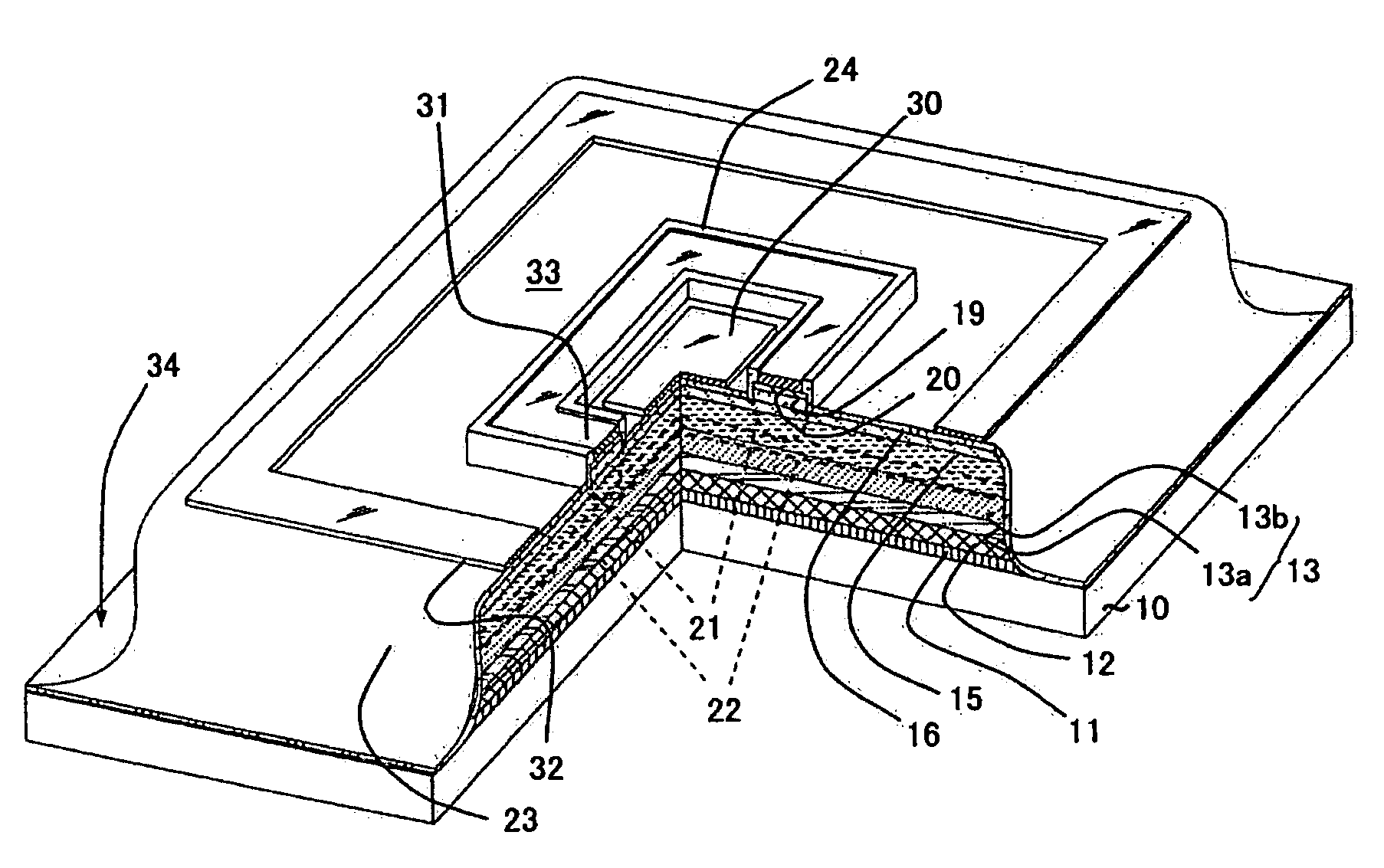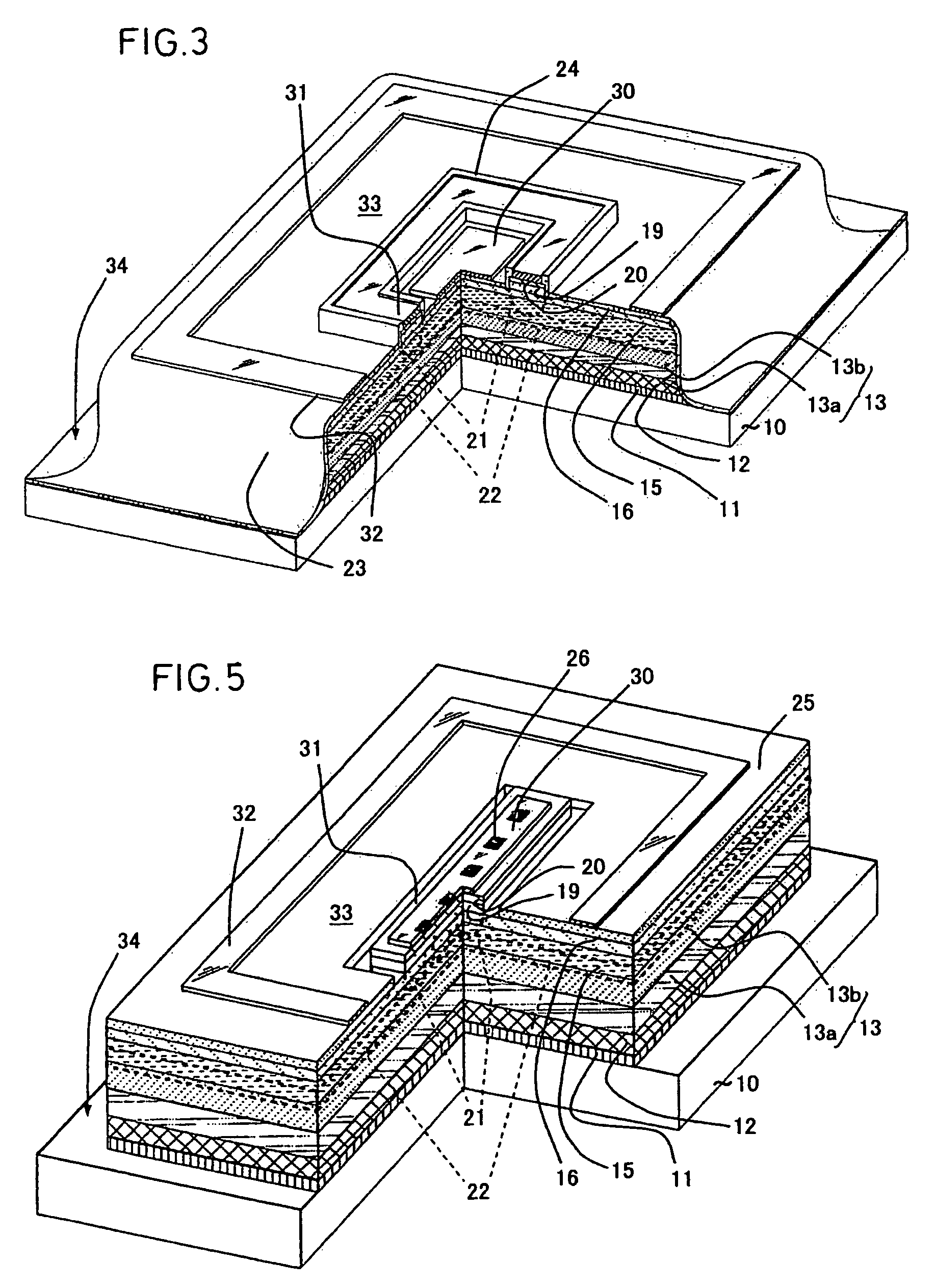Photo-field effect transistor and integrated photodetector using the same
a photodetector and photofield effect technology, applied in the direction of diodes, semiconductor devices, electrical apparatus, etc., can solve the problems of not being able to meet the extensive demands of eb-ccd cameras, the detection limit of pin photodiodes is much inferior to a silicon ccd, and it is difficult to combine ccd with an electron multiplying plate requiring an accelerated voltage of 1 kv
- Summary
- Abstract
- Description
- Claims
- Application Information
AI Technical Summary
Benefits of technology
Problems solved by technology
Method used
Image
Examples
Embodiment Construction
[0077]The present invention will be described in detail with reference to the accompanying drawings.
[0078]FIG. 1 shows a preferred embodiment of a photo-FET having a relatively fundamental structure, which has been fabricated according to the present invention.
[0079]Generally, in long wavelength semiconductor materials prepared with the MOCVD, an InGaAs—InP-based material used in the near-infrared region of up to a wavelength of 2.5 μm exhibits an n-type background carrier concentration of around 2×1014 to 2×1015 cm−3 due to the influence of residual impurities, and an InSb-based or InAsSb-based material used in the infrared region of up to a wavelength of 6 μm exhibits a background carrier concentration of around 1×1016 cm−3. On the other hand, to increase the photo-absorption coefficient, a photo-detector is required to have a light-absorbing layer (photosensitive layer) having a thickness of at least 1 to 2 μm. For this reason, it is necessary to deplete a channel beforehand whic...
PUM
 Login to View More
Login to View More Abstract
Description
Claims
Application Information
 Login to View More
Login to View More - R&D
- Intellectual Property
- Life Sciences
- Materials
- Tech Scout
- Unparalleled Data Quality
- Higher Quality Content
- 60% Fewer Hallucinations
Browse by: Latest US Patents, China's latest patents, Technical Efficacy Thesaurus, Application Domain, Technology Topic, Popular Technical Reports.
© 2025 PatSnap. All rights reserved.Legal|Privacy policy|Modern Slavery Act Transparency Statement|Sitemap|About US| Contact US: help@patsnap.com



